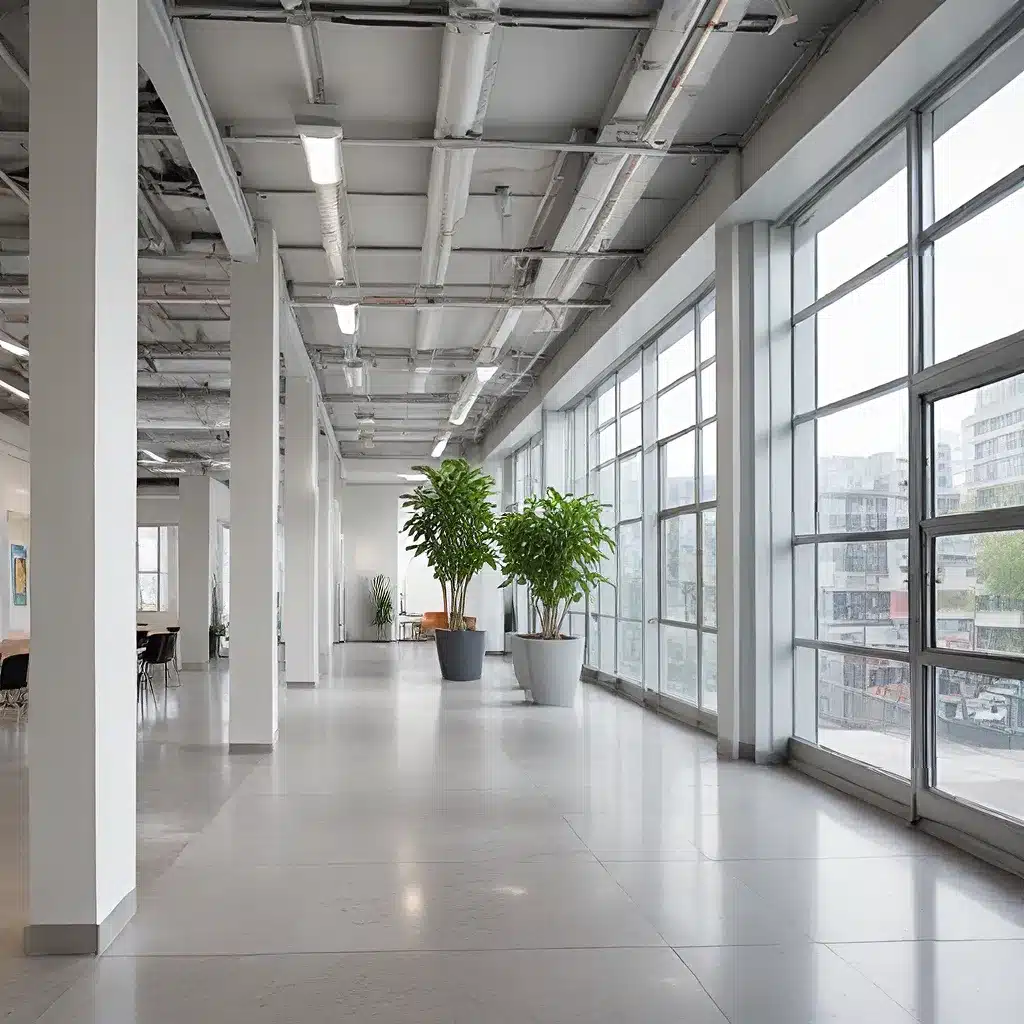
The Rise of Smart Building Technologies
Digitalization is transforming the building industry, including the widespread adoption of room sensing technology. As one of the largest sources of carbon emissions, commercial building owners are under pressure to reduce the adverse environmental impact of their properties. Buildings account for 75% of electricity use in the US and 40% of energy consumption globally, contributing to 33% of greenhouse gas emissions.
Smart building technologies, such as room sensors and controllers, are driving a data-driven approach to building automation. This shift towards data-driven decision-making can be a significant part of the solution to combat the building sector’s negative environmental effects. Additionally, the onset of the COVID-19 pandemic has accelerated the demand for healthy building-related technologies, with a focus on occupant comfort and well-being.
Balancing Energy Efficiency and Occupant Comfort
One of the biggest challenges in the smart building industry at the room level is maintaining occupant comfort while balancing energy conservation measures (ECMs). Traditional approaches to HVAC control often fall into the category of constant air volume (CAV), where air is continuously provided to a space or zone, typically based on a defined schedule or triggered using presence detection sensors.
As building owners and regulators alike move towards optimizing energy use as part of sustainable building operation or net-zero efforts in commercial properties, there is a need to shift from a static air flow operation model to a more dynamic air flow model. This dynamic air flow model, using the concept of demand-controlled ventilation (DCV), relies on real-time data such as CO2, occupancy, or people count to enable control decisions and efficiently run the HVAC system.
Leveraging Sensor Data for Improved Building Operations
By capturing and analyzing sensor data, building owners and facility managers can gain valuable insights to improve energy efficiency and occupant comfort. Some key benefits of utilizing sensor data include:
Energy Conservation Techniques
Sensor data can be used to implement simple energy conservation techniques, such as running lighting controls using timers or occupancy sensors, using variable speed drives, and making upgrades to HVAC equipment by adding dampers, actuators, and associated control sequences. Digitalization has enabled these straightforward modes of operation to achieve higher levels of efficiency, thanks to the use of room sensor data points for dynamic, real-time HVAC load management.
Demand-Controlled Ventilation (DCV)
Demand-controlled ventilation-based HVAC systems are an effective solution to balance comfort and energy spend. DCV systems use input variables that indicate occupancy or the need for ventilation, such as CO2 levels, to dynamically adjust the HVAC system’s operation. People count data can be used to determine the time, amount, and rate of required ventilation, leading to more efficient and occupant-centric operation without compromising on energy use.
Occupancy-based Analytics
Sensor data can provide valuable insights into space utilization and occupancy patterns. By analyzing historical data, building owners and facility managers can identify underutilized spaces, optimize cleaning schedules, and make data-driven decisions to improve energy efficiency and occupant experience.
Lighting and Comfort Control Integration
Sensor data, such as lux levels and occupancy information, can be integrated with lighting control systems to optimize energy consumption and ensure a comfortable indoor environment. This integration can help reduce energy waste by automating lighting based on real-time occupancy and ambient light levels.
Sensor Technologies for Building Automation
When implementing an effective DCV strategy, the choice of sensor technology is crucial. Traditional passive infrared (PIR) sensors, which can only detect the presence of people in binary terms, are often not sufficient to fully realize the potential of DCV. Non-camera-based people counting technology, such as thermal imaging sensors, can provide more accurate and granular occupancy data to enable truly occupant-centric building automation.
Multimodal Sensor Capabilities
Sensor technologies that offer a combination of features, such as occupancy detection, people counting, light sensing, and environmental monitoring, can provide a comprehensive view of the indoor environment. This multimodal approach allows building owners and facility managers to make more informed decisions and optimize energy usage while prioritizing occupant comfort and well-being.
Sensor Integration and Scalability
Sensor solutions should be able to seamlessly integrate with existing building management systems (BMS) and analytics platforms, ensuring a scalable and future-proof approach to building automation. Interoperability and the ability to work with trusted partners are essential for building owners to leverage the full potential of sensor-enabled technologies.
Driving Sustainability and Occupant Engagement
Sensor-enabled building automation not only improves energy efficiency but also enhances the occupant experience. By providing real-time information about indoor environmental conditions, such as temperature, humidity, air quality, and lighting levels, building occupants can be engaged in sustainability initiatives and become more aware of their impact on the building’s energy consumption.
Additionally, sensor data can be used to achieve compliance with various building standards and certification programs, such as LEED, WELL, and Fitwel, further driving the adoption of these technologies and promoting sustainable building practices.
Conclusion: The Future of Sensor-Enabled Building Automation
The use of multisensor technologies in everyday building spaces has immense potential to transform the way we design, operate, and interact with our built environments. Demand-controlled ventilation, enabled by accurate occupancy data, is just one example of how sensor-driven innovations can lead to more sustainable and user-centric workspaces.
As the building industry continues to embrace digitalization, the integration of sensor networks, IoT, and data analytics will be instrumental in creating a new generation of decarbonized, resilient, and optimized buildings that prioritize both energy efficiency and occupant well-being.
Sensor-Networks.org is at the forefront of exploring the latest advancements in this field, providing valuable insights and resources for professionals, researchers, and enthusiasts interested in the future of sensor-enabled building automation.